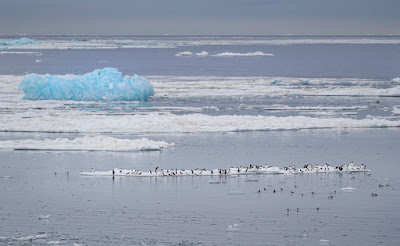No matter where I am in the world, birds are always a focus for my photography. Although the variety of birds in the Arctic was less than in many places I have been, the sheer number of individuals was staggering. Most Arctic birds have a short time when they can come on shore to nest so they make the most of it.
This post shows some of the more common birds we saw, such as the Arctic Tern, above. These birds are so delicate looking but they are ferocious in defense of their nests.Barnacle Geese are similar in size and coloration to Canada Gees.
 This wall of Kittiwakes and Guillemots is indicative of what we saw in a number of locations. In the closer shot, below, you can get a sense for just how dense the population was. There were thousands of birds on each wall we visited.
This wall of Kittiwakes and Guillemots is indicative of what we saw in a number of locations. In the closer shot, below, you can get a sense for just how dense the population was. There were thousands of birds on each wall we visited.The Guillemots were also visible hanging out on ice floes far out from shore.
We saw several different types of guillemots including this Black, left. It was fascinating to watch this guy use his red feet as rudders.
One type of birds we saw constantly was the Fulmar. These guys are really, really cool, in my opinion. They are tube-nosed, which means they have a tube on top of their beaks which allows them to smell food from a long way off. They have a salt gland which excretes excess salt since they are constantly ingesting it as they skim along the top of the ocean. So their nose is always running with salt snot. And their greatest defense against predators is to throw up on them. Their puke is so toxic it will mat the plumage of predators, causing them to be unable to fly and so to die. Wow!
Speaking of predators, the most common one of other birds on Svalbard is the Glaucous Gull. These guys are huge and ferocious. They steal eggs and attack smaller birds and chicks.
In the photo above, the female Glaucous Gull is sitting the nest while the male watches over her. It looked to me like she was riding side-car.
The only song bird of the Arctic is the Snow Bunting. It was such a treat to see and hear them since they occasionally show up in Wyoming in mid-winter. Their version of going south in the colder months!









No comments:
Post a Comment